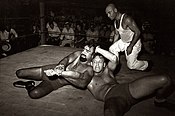
Capitol Wrestling Corporation (CWC) was an American sports promotion company. Run by Vincent J. McMahon from the 1950s until the 1980s, the company was originally a professional wrestling and boxing promotion and later became the holding company for the World Wide Wrestling Federation (WWWF), later the World Wrestling Federation (WWF). In 1982, the CWC was acquired by Titan Sports, Inc., owned by Vincent J.'s son Vincent K. McMahon. The CWC was the precursor to today's WWE, currently run by Nick Khan as president and owned by TKO Group Holdings, of which Vincent K. McMahon is executive chairman.

Dustin Patrick Runnels is an American semi-retired professional wrestler. He is currently signed with All Elite Wrestling (AEW), where he performs under the ring name Dustin Rhodes. He is best known for his multiple tenures with WWE from 1995 to 2018 under ring name Goldust. A second generation wrestler, he is the son of WWE Hall of Famer Dusty Rhodes and the half-brother of Cody Rhodes. He is also known for his appearances with World Championship Wrestling (WCW), Total Nonstop Action Wrestling and All Elite Wrestling.

Joseph Raymond "Toots" Mondt was an American professional wrestler and promoter who revolutionized the wrestling industry in the early to mid-1920s and co-promoted the World Wide Wrestling Federation. Some of the stars Mondt helped create from the 1920s through the 1960s included Wayne Munn, Jim Londos, Antonino Rocca, Bruno Sammartino, Stu Hart and Cowboy Bill Watts.
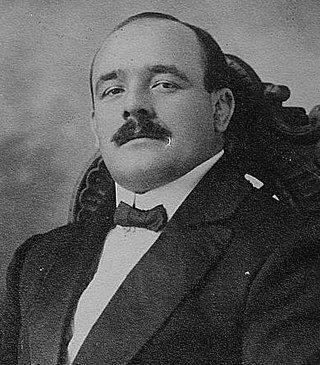
Jan Stanisław Cyganiewicz, better known by his ring name, Stanislaus Zbyszko, was a Polish strongman and professional wrestler. He was a three-time World Heavyweight Champion at his highest profile in the United States during the 1920s. The surname Zbyszko was only a nickname, given to him by friends due to his bravery when he was a child. The name comes from a fictional medieval Polish knight in the historical novel, The Knights of the Cross by Henryk Sienkiewicz. Stanislaus Zbyszko was the brother of Wladek Zbyszko (1891–1968).

Ronnie Aaron Killings is an American professional wrestler and rapper. He is currently signed to WWE, performing as a free agent under the ring name R-Truth.
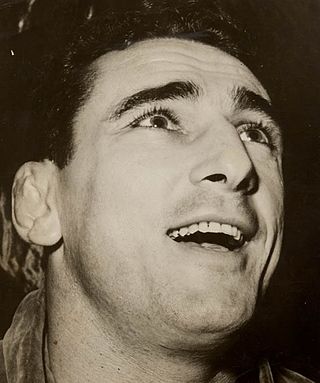
Antonino Rocca was an Italian naturalized Argentinian professional wrestler. He tag teamed with partner Miguel Pérez. He was posthumously inducted into the WWE Hall of Fame as a member of the class of 1995 and the Wrestling Observer Newsletter Hall of Fame in 1996.

Aron Steven Haddad is an American retired professional wrestler best known for wrestling with WWE under the ring name Damien Sandow. He is also known for his time in Total Nonstop Action Wrestling and the independent circuit under the ring name Aron Rex, where he was the first-ever Impact Grand Champion in 2016.

Robert Herman Julius Friedrich, better known by the ring name Ed "Strangler" Lewis, was an American professional wrestler and trainer. During his wrestling career, which spanned four decades, Lewis was a four-time World Heavyweight Wrestling Champion and overall recognized officially as a five-time world champion. Considered to be one of the most iconic and recognizable sports stars of the 1920s, often alongside boxer Jack Dempsey and baseball player Babe Ruth, Lewis notably wrestled in over 6,000 matches and lost only 32 of them.
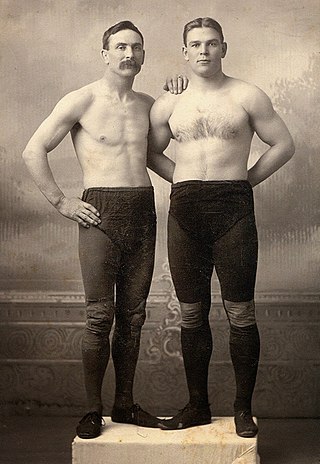
Martin Burns, nicknamed Farmer Burns, was an American catch wrestler, wrestling coach, and teacher. Born in Cedar County, Iowa, he started wrestling as a teenager and made money traveling around the Midwest wrestling in carnivals and fairs. As a professional wrestler, he claimed the American Heavyweight Championship by defeating Evan "Strangler" Lewis in 1895 and held the title for two years, during the time when contests were legitimate. At this time, Martin Burns himself claimed to have wrestled in more than 6,000 matches and is said to have lost only seven. After the end of his active wrestling career he started a successful wrestling school in Omaha and later coached Cedar Rapids' Washington high school to the first Iowa high school state wrestling tournament title. He died in Council Bluffs in 1937. In 2001 Martin "Farmer" Burns was inducted into the International Wrestling Institute and Museum Hall of Fame. He was also inducted into the Wrestling Observer Newsletter Hall of Fame in 2002. The Professional Wrestling Hall of Fame inducted Martin Burns in 2003 and Burns was inducted into the WWE Hall Of Fame in 2017.

Catch wrestling is a classical hybrid grappling style and combat sport. It was popularised by wrestlers of travelling funfairs who developed their own submission holds, or "hooks", into their wrestling to increase their effectiveness against their opponents. Catch wrestling derives from various different international styles of wrestling: several English styles. The training of some modern submission wrestlers, professional wrestlers and mixed martial artists is founded in catch wrestling.

Professional wrestling in the United States, until the 1920s, was viewed as a legitimate sport. This view did not endure into the 1930s, as professional wrestling became identified with modern theatrics. The scripted nature of the art has made some critics view it as an illegitimate sport, particularly in comparison to boxing, mixed martial arts, and amateur wrestling. No major promoter or wrestler denies that modern professional wrestling has predetermined match outcomes. Despite this, promoters and fans continued to play along with the tradition of viewing the matches as legitimate competition; this has become a tradition known as "kayfabe".

Paul Forbes Bowser was a professional wrestling promoter who was active from the 1920s to the 1950s in the Boston area.
A promoter works with event production and entertainment industries to promote their productions, including in music and sports. Promoters are individuals or organizations engaged in the business of marketing and promoting live, or pay-per-view and similar, events, such as music concerts, gigs, nightclub performances and raves; sports events; and festivals.
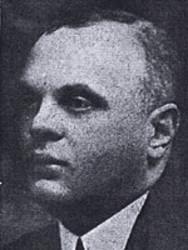
Jack Curley, born Jacques Armand Schuel, was a sports promoter of the early 1900s. He managed several high-profile boxing events around the turn-of-the-century and he also established professional wrestling as a viable business in the big city, and he eventually built the New York City office into an industry power while negotiating an agreement between the nation's most powerful regional territories.
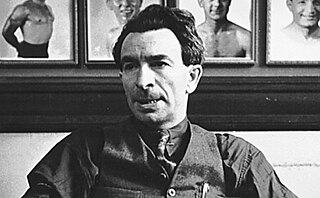
Jack Pfefer was an American professional wrestling promoter during the early-to-mid twentieth century. He pioneered an earlier form of sports entertainment, as he was one of the first promoters to visualize the pro wrestling business in the mold of theater. However, he developed an infamous reputation when he exposed the sport's inner secrets to the mainstream press in a spiteful attack that nearly destroyed the entire industry.
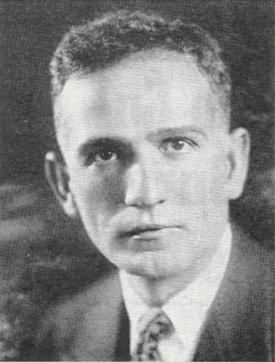
Thomas Nicholas Packs was a Greek-American professional wrestling promoter. He was one of the top promoters over the first half of the 20th century and was responsible for building one of the nation's most prestigious wrestling territories in St. Louis.

Wilhelm Baumann, better known as Billy Sandow, was an American professional wrestler and promoter.

The history of professional wrestling, as a performing art, started in the early 20th century, with predecessors in funfair and variety strongman and wrestling performances in the 19th century.

The 2013 TLC: Tables, Ladders & Chairs was the fifth annual TLC: Tables, Ladders & Chairs professional wrestling pay-per-view (PPV) event produced by WWE. It took place on December 15, 2013, at the Toyota Center in Houston, Texas. It was the last TLC to air exclusively via PPV, as in 2014, the events also became available on WWE's online streaming service, the WWE Network, which launched in February that year.

Cody and Dustin Rhodes were an American professional wrestling tag team consisting of Cody Rhodes and Dustin Rhodes. They are also known for the time in WWE and All Elite Wrestling (AEW). Cody and Dustin are real life half-brothers and were once managed by their father, wrestling legend Dusty Rhodes. They were a sub-group of The Elite.
